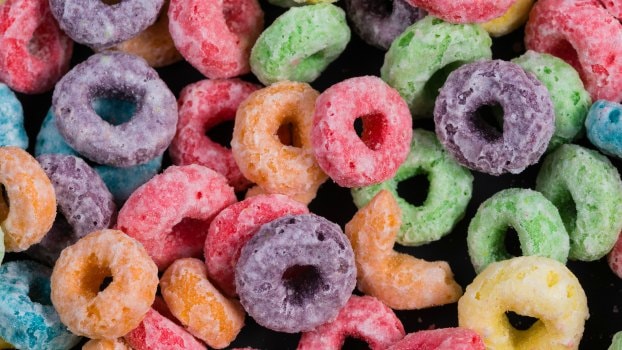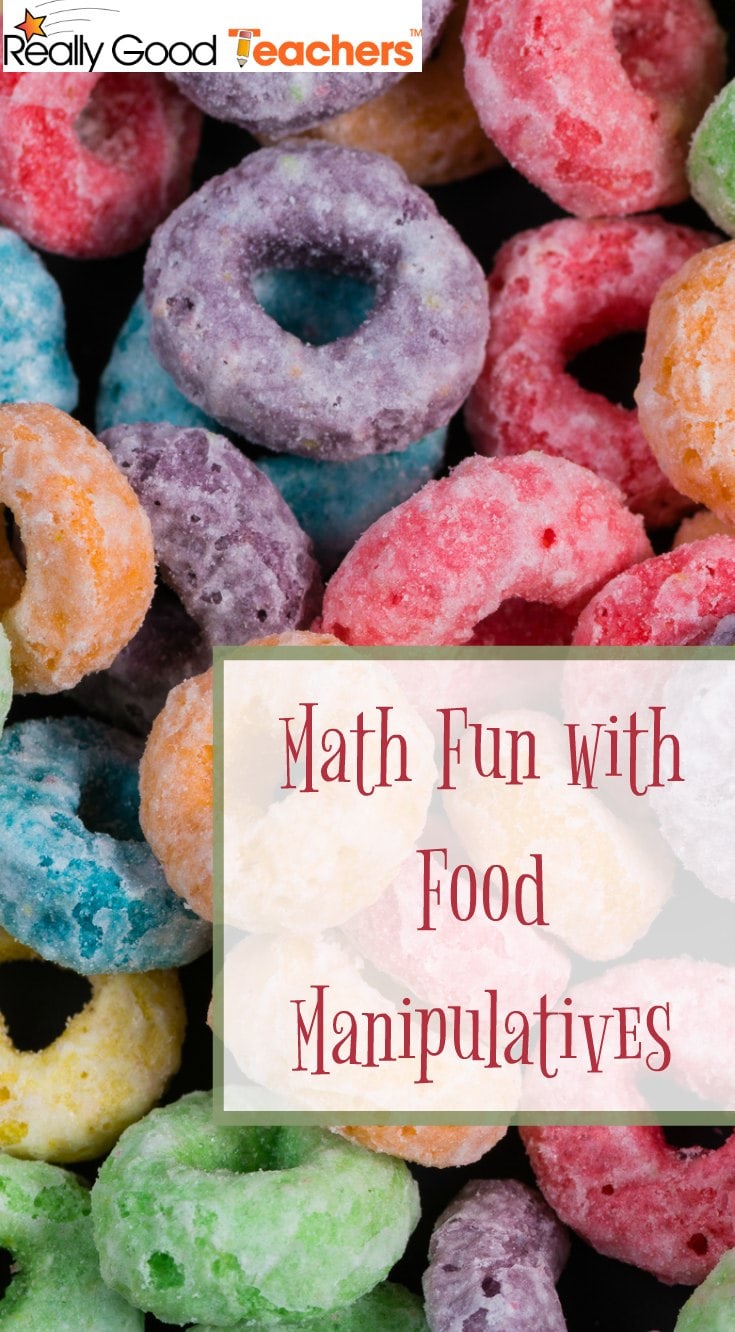
There is no limit to the types of things that can be used as manipulatives in math. If students can count it, they can use. While traditional counters will never go out of style, there is something a lot more motivating and exciting about math with food. Whether you are teaching addition, subtraction, multiplication, division, fractions, decimals, or percentages, there are different foods that are perfect for your lessons.
Math with Food Manipulatives
Addition and Subtraction
Manipulatives for addition and subtraction can be anything. When it comes to food as a manipulative, the sky is the limit. If you are searching for just the right food item for a unit lesson, try some of the ideas below that correspond with different themes.
- Bear shaped graham crackers for use while doing a bear unit study, reading Going on a Bear Hunt (Rosen, 1989), or studying hibernation and adaptation.
- Shaped marshmallows can be used for holiday unit studies and while studying shapes and/or colors.
- Cookies are perfect for when reading if You Give a Mouse a Cookie (Numeroff, 1985), counting chocolate chips (also good for estimating how many are inside), and working with word problems.
- Lollipops are a fun math manipulative especially when combined with a piece of floral foam. Have two blocks of floral foam and an addition problem ready. The student can then stick the correct addend number in each block and count them to get the answer. It is a great way to incorporate a different kinesthetic activity (pushing and pulling the pops into and out of the foam) that will reinforce the process.
Multiplication and Division
The products can get rather large when discussing multiplication, so it is important to use things that are small and easy to purchase a lot of without breaking the bank.
- Candy Dot Strips are a great way to talk about multiplication and division, because the dots are already lined up and ready for multiplication challenges. Give students a strip and let them come up with different multiplication and division problems based on the number of candies on their papers.
- Small pretzel sticks can be used for smaller multiplication and division problems. They are easy for little fingers to manipulate and you can pre-package them in snack size bags before the lesson begins.
- Oat cereal with holes in the middle is good for stringing and making arrays. The fact that a large box is inexpensive also makes it an attractive choice for practicing larger multiplication and division facts.
Fractions, Decimals and Percentages
- Pie of any variety is great for discussing fractions, decimals and percentages. Cut the pie into one slice per child and have them determine the fraction, decimal and percentage remaining and gone each time a piece is taken.
- Pizza is a multi-tasking food when used as a math manipulative. Not only can you work with fractions, decimals, and percentages when it comes to the slices, but you can also discuss them while talking toppings. Have students create their own paper plate pizzas showing specific fractions and percentages of the toppings they would like to include.
- Lucky Charm cereal can be sorted and graphed to find the fraction, decimal and percentage of each type of marshmallow. This is a great idea for St. Patrick’s Day.
- Large pretzel rods can lead into a lesson about fractions, decimals, and percentages by breaking the rod into multiple pieces. It is also an opportunity to talk about less than and greater than.
Remember to have paper plates for each child to place their food manipulative on. Instant hand sanitizer is also a good idea – especially if students will be eating the manipulatives at the end or as part of the lesson. What are some of your favorite food manipulatives to use for math lessons? Share with us below or on the forums!

Yummy! What student wouldn’t love these edible ideas!?! We use marshmallows and toothpicks to build 3d shapes and learn vocabulary terms (edge, vertice, and side) when I teach the geometry unit.